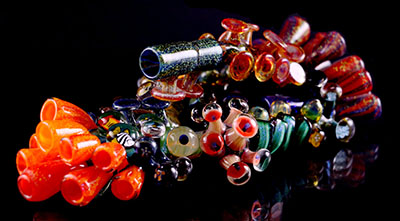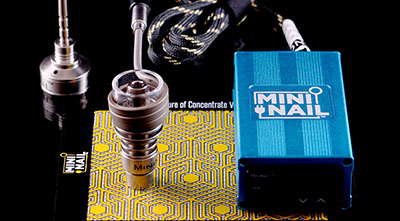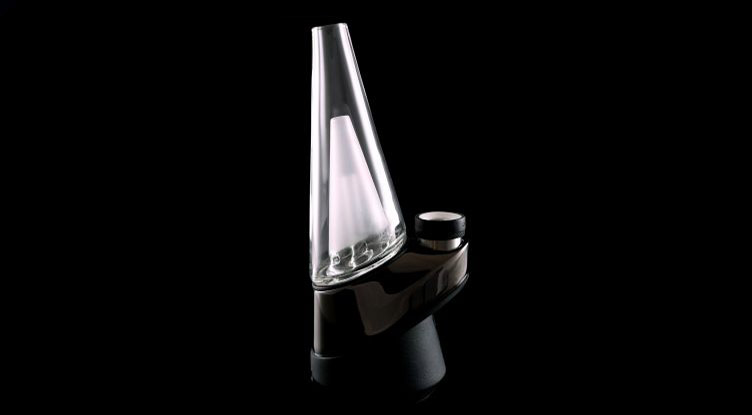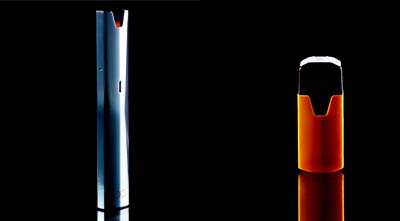27/03/2022
Dabbing 5/5: What cannabis concentrates are available?

Since the discovery of the extraction method of cannabis resin using solvent (BHO) around the turn of the millennium and the discovery of another extraction method using temperature, time and pressure (Rosin/ SHO) around 2015, numerous different cannabis concentrates exist. Individual products differ not only in the way they are extracted, but also, regardless of the specific method, in consistency, structure, retention of volatile substances or proportion of undesirable plant parts such as chlorophyll or lipids. Because the extraction artist influences all these parameters.
BHO
BHO literally stands for Butane Hash Oil. However, contrary to this terminology, which was influenced by initial ignorance, it is not oil, but resin. In the vernacular, however, the term "hash oil" has become accepted as a synonym for cannabis concentrates. Probably the misleading oil term dates back to the times of the first large cannabis concentrate, spread by cannabis-as-medicine pioneer Rick Simpson, the Rick Simpson Oil (RSO). This concentrate, comparatively inferior due to high terpene losses and made with alcohol and a rice stove, actually has a very oily consistency - but it is also just a resin extract.
You can dissolve the cannabis resin with various solvents.
Butane gas is valued for its good terpene preservation properties, but also requires a carefully executed extraction process. Other solvents include DME, which, like butane gas, is used by many BHO artists. It has the advantage of being less reactive, reducing the risk of explosion in the event of sparking. Supercritical CO2 is also used for extraction. Here, the advantage is that the gas disappears immediately during the extraction process and does not have to be degassed first in a time-consuming manner with the aid of a vacuum chamber, as in the case of BHO.
But no matter which specific solvent is finally chosen: Basis for the solvent-based extraction process provides in any case a glass or metal cylinder, into which a certain amount of flower or cut material of the cannabis plant goes. This cylinder has an opening at the top and bottom - the gas enters at the top, finds its way through the plant material, dissolves active ingredients such as cannabinoids and terpenes, and leaves the cylinder together with these substances through the second opening at the opposite end. The active ingredient-gas mixture is then collected using PTFE films. Except in the case of CO2 extraction, it still takes some time at this point until the solvent has completely evaporated from the concentrate and you can collect it.

Live Resin
Live Resin represents a very common subspecies of BHO. This is made from fresh plant parts directly after harvesting. Live Resin alludes to the plants still being "alive" - in fact, Live Resin tastes very fresh, floral and is very terpene-rich. Since there is no drying time before the extraction process, Live Resin also turns out to be very economical. In the United States, Live Resin is one of the best-selling cannabis concentrates around. In domestic climes, unfortunately, we have to be patient a little while longer until the legal situation changes again as it was before 2003. Live Resin is not to be confused with Rosin, both products are fundamentally different.
SHO - Rosin
Since about 2015, an alternative extraction method has been spreading around the world: solvent-free extraction using pressure, temperature and time. The new process came at just the right time, as media reports of fatal accidents as a result of BHO extractions gone wrong began to accumulate as early as 2014, two years after legalization in Colorado.
The Rosin pioneers started with a straightening iron, a piece of baking or parchment paper and a small bud - heat came from the straightening iron, pressure from body weight and time cleared itself. The explorers got shiny gold resin dabs as a result, which were terpene-rich and dabbed well. Unfortunately, the yield was not very big, so a new solution had to be made.
Extra for this purpose, a few companies such as Rosin Tech Products have developed professional heat presses, which can apply several times higher pressures than the old known smoothing iron. In addition, with such a press, significantly more material can be pressed at once and the pressure can be applied for a significantly longer time. The results vary, but depend mainly on the starting material and secondarily on the parameters used. Raisin is the most honest test of the quality of your buds: If a lot comes out, the buds seem to have a high THC value. If the yield turns out low, the source material seems to have been less than optimal.
Consistencies
.Cannabis concentrates can have quite different consistencies. We present you a selection:

Shatter
Shatter is a consistency that is primarily achieved using BHO extraction. Some time ago, Shatter was considered the beauty ideal for cannabis concentrates. It is characterized by a hard, brittle and shiny surface and not infrequently carries small bubbles from the vacuum chamber. Shatter appears particularly attractive when it presents a golden-yellow coloration.
However, appearances are deceiving: the dry appearance of Shatter speaks to terpene poverty. Some terpenes are themselves solvents - a cured concentrate cannot possibly contain them. It looks nice anyway, of course. Shatter can be made by long purging, i.e., outgassing, in a vacuum chamber with a slight application of heat.
Budder.
Extracts with a "buttery" consistency are usually very creamy, infused with a coarse crystalline texture. Budder strongly resembles frosting, but the actual appearance differs between tending to be liquid or more crumbly, depending on the product. Budder can be made with trim, floral or fresh material.
Terp Sap / Sauce / Holy Water.
This is a consistency for relatively liquid concentrates that are indicative of high terpene levels. Up to 20% terpenes can be contained in such a fluid concentrate, which is enormous! Indicator for the high terpene content is the liquid consistency for the reason already mentioned above that many terpenes themselves act as a (natural) solvent and accordingly provide a moist consistency.
Crumble.
Another consistency for cannabis concentrates is represented by crumble. It is among the driest forms of concentrates and is notable for its coarseness. It appears like a pumice stone in many cases, but otherwise shares many disadvantages with Shatter. Crumble is also made in almost the same way - but unlike Shatter, the temperatures in the vacuum chamber are raised even higher.
Diamonds and Sauce.
In addition to cannabinoid-terpene blends, pure THC crystals also exist with Diamonds. These crystals consist of a very large part of THC and are usually dressed in a terpene sauce. The sauce, in turn, contains a particularly large number of aroma-giving and effect-stimulating terpenes. So the crystals can be enjoyed as the first course, and the terpenes as the second course. It should be noted at this point that THC is still illegal in Switzerland and we do not want to encourage anyone to THC consumption!
How can you make your own "dabs"?
Concentrates are not available for purchase in desired quality in many places. Therefore, consumers around the world are going to make their own concentrate at home. At Vapesndabs, we of course offer extraction accessories for both solvent-based extraction methods and rosin technology. We carry glass extractors for the small budget, solvents like dexso and butane gas, PTFE films to collect the material, and much more. In the field of Rosin we have some Rosin presses in our assortment and also for this again the necessary PTFE foils, which we strongly recommend as a healthy alternative to baking paper.






